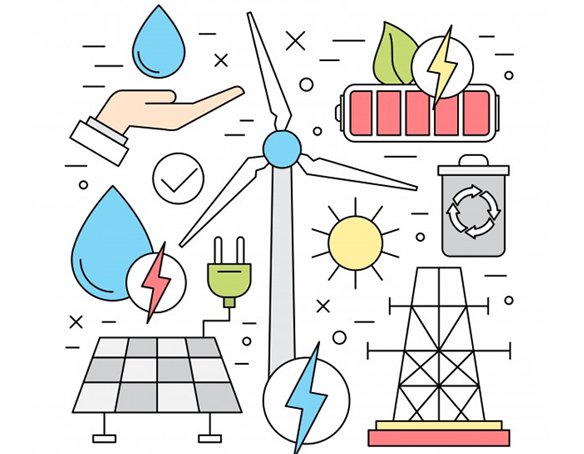Renewable energy sources: The Game Changer

Energy, the ability to do work is one of the basic needs in our daily life. We can’t think of a life without energy. We need energy to power vehicles, electrical appliances, industrial machinery, and for almost every task!
Energy exists in several forms including heat, kinetic energy, potential energy, electrical energy and light or radiation. Energy comes from various types of sources called energy sources. Our planet is abundant in energy sources though fossil fuels still play a vital role as our primary source of energy. Any alternative to fossil fuels is an alternative energy source. There are so many alternative energy sources. However, some of the alternative energy sources are non-renewable. For example, nuclear fuels are alternative energy sources but are not renewable. Once we have consumed them they are gone.
What are renewable energy sources?
Renewable energy sources are energy sources which are naturally and continually replenished in a short period of time on the human timescale. Following are the most attractive sources of energy which are currently being used or developed.
- Sunlight
- Wind
- Rain (Hydropower)
- Biomass
- Tides
- Ocean waves
- Ocean currents
- Ocean thermal energy
It is worth understanding that fossil fuels are also continually formed by natural processes but take millions of years to form. As a consequent, fossil fuels are being rapidly depleted due to our consumption. That is why fossil fuels are not considered to be renewable.
Your car would take 10 minutes to drive 15 km and would consume one liter of petrol. However, natural processes by which fossil fuels are formed would take millions of years to form the same amount of fuel.
Contribution of renewable energy to the global energy demand
Following pie chart shows the proportion of global energy production provided by different energy sources in 2013. We can see that only 19% of the world energy consumption in 2013 has been provided by renewable energy sources while 78.4% of the consumption has been provided by fossil fuels. In addition, the chart clearly shows that almost one-tenth of the world’s energy consumption or half the renewable energy capacity in 2013 has been met by traditional biomass such as wood and cow dung. Moreover, one-fifth of the renewable energy capacity has been provided by hydropower. As we can see the contribution of direct solar energy to the global energy demand in 2013 is less than 0.25%.

Figure 1: Global energy consumption by source [1]
Why is renewable energy important?
We have already discussed the detrimental effects caused by fossil fuel combustion. Further, we realized that fossil fuels are rapidly being exhausted. However, we still need energy. So, renewable energy is the best solution.
They are not depleted.
And they are abundant in nature.
They have minimal environmental effects.
Most of the renewable energy sources release only a negligible amount of emissions compared to the fossil fuels and so provide the best solution to mitigate the climate change.
Fossil fuels or renewable energy? All up to us!
Renewable energy is everywhere from our backyard to the rooftop and from the North Pole to the South Pole. But still, we heavily rely on fossil fuels and while struggling with the environmental impacts associated with fossil fuel combustion, unfortunately.
Let us discuss renewable energy in more detail in next article.
